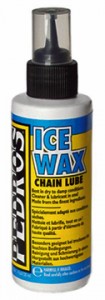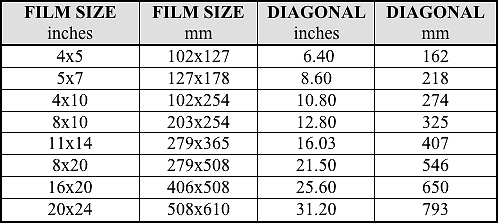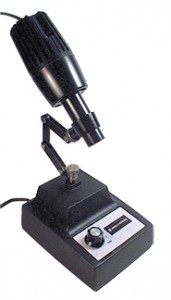ONLY A LIGHT-TIGHT BOX
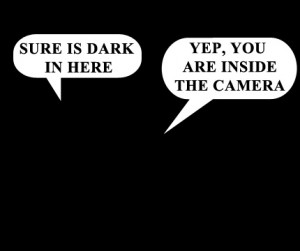 “He tried to impress upon me that, though a camera is nothing but a tool, it can be (therefore it must be) used for a higher purpose than the meaningless transference of already visible information onto a sheet of paper. Because camera could describe a worker’s vision of his world, like a cello or a paintbrush, or granite block, camera held the capacity for art.”.
“He tried to impress upon me that, though a camera is nothing but a tool, it can be (therefore it must be) used for a higher purpose than the meaningless transference of already visible information onto a sheet of paper. Because camera could describe a worker’s vision of his world, like a cello or a paintbrush, or granite block, camera held the capacity for art.”.
-Fred Picker- Discussing his experience with the Ansel Adams Workshops.
Zone VI Newsletter, Number 39, June, 1984, p. 5
A camera is just a tool. . . a thing. It is only a light-tight box that holds the lens and film. It is no different than a carpenter’s saw, a painter’s brush, a pianist’s piano, or a sculptor’s mallet and chisel. Any of these tools in the hands of the inexperienced will create little more than noise or a mess. Likewise, in the hands of a beginner, the camera is no more than a thing. In the hands of an experienced photographer is becomes a tool for creating art.
If you want to become a photographic artist the first goal is to become an accomplished master of the equipment. But, how do you get there from here? It starts with ambition and drive. Like any skill, you will only learn, and become a master, if you are dedicated. The mechanics of photography are not difficult to learn. It does take time and determination to get there, but it is not an unachievable task. You just have to have the desire and drive to work through the process of learning how best to use the tools.
Think of when you were a kid and you thought that taking piano lessons was a great thing to do, since some of your friends were already enrolled. Then after a while you get the usual threats from your parents to get in there and practice! You get the customary, we bought you that expensive piano and are paying for lessons, so get to work. Truth is, you really didn’t want to learn the piano in the first place. It was just something you thought would be neat. If you really wanted to learn, your parents would have to be lecturing you about spending too much time with the piano and limiting your keyboard time.
It is that drive. . . that obsession with learning that makes for the great artist. You have to eat, sleep and breathe photography to be really successful. Just a casual interest will lead to little more than a few casual photographs. Or, maybe you are just obsessed with the hardware. Maybe you would be better off collecting and trading equipment. There is always that possibility that the light-tight box is your obsession and not the photograph. Only you can make that determination.
That Light-Tight Box is just the camera. . . a tool to be used in the creation of your art. I hope that you learn to use your tools to your best advantage! Invest your time wisely. Learn the tools of your chosen craft well. Do not stumble around in the dark, it belongs inside the camera.
JB
WHAT PAPER DEVELOPER ARE YOU USING THESE DAYS?
 So. . . everyone has their preferred brands, methods, techniques and such. I have mine for sure. As Fred Picker said, “if you have been around for twenty years or more and haven’t formed any opinions, what have you been doing?” I miss Fred!
So. . . everyone has their preferred brands, methods, techniques and such. I have mine for sure. As Fred Picker said, “if you have been around for twenty years or more and haven’t formed any opinions, what have you been doing?” I miss Fred!
There seems to be a lot of paper developer formulas floating around. My wife and I have tried our share of so-called ‘magic’ formulas. We have been down the Amidol road, and don’t get me wrong, Amidol is a great developer but it is far from magic. Amidol is about the best I have found for Azo. Yes we do print on Azo, in fact, we have a stock of it on hand. I would just like to go on the record as not being a person that subscribes to the idea there are magic bullet formulas. There is what works for you and that can be anything that suits your way of seeing. Anyone that has a one-size-fits-all attitude, usually has something to sell.
We have had our frustrations with Amidol developers. And I am not convinced that it is the best, certainly not the only, developer suitable for Azo or any other paper. In a side-by-side test my wife and I determined that Amidol was our developer of choice several years ago. There is a subtle edge there that is not something you can put into words, but there is a difference we decided worth exploring. But Amidol is expensive and can be frustrating to use at times. Yes, we have tried all of the popular formulas. I have just not been too impressed with the results I have obtained at times. What I was searching for was a cold-tone developer. Not only for Azo, but for the other printing papers we use. At times Amidol was still giving a green cast on Azo. Not bad but annoying and required lengthy toning in selenium to offset. I like a cold, neutral tone for most of what I print and the Amidol formulas just wasn’t consistent enough for me. I was not happy with how things were working. It was time to do some research.
I found a lot of interest on the Internet about a Pyro base paper developer formulated by Donald Miller. Mr. Miller named his developer Pyro Plus Paper Developer (PPPD) and after reading about this formulation I was inspired to give it a try. Believe me it takes some inspiration to get me to try something new, but I was frustrated with Amidol and I needed some good news for a change.
From all of the discussions about PPPD I found one thing was clear; there were numerous variations to the formula. The original published formula called for both Pyrogallol and Pyrocatechol. Now this is where things get a little confusing. I don’t recall where I found the particular variation that I tried, but there was a suggestion from somewhere to replace the Pyrogallol with Citric Acid. Not sure where I found that, but that was the formulation that I first tried.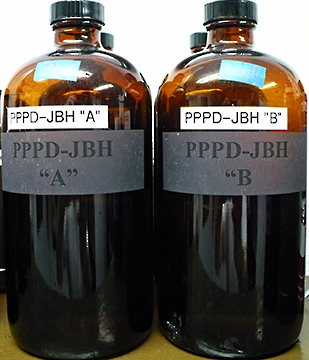
From what I gathered, adding the Pyrogallol and changing the amount of Potassium Bromide makes a more warm-tone developer. I was not interested in warmer, I wanted a cold, neutral developer. To my surprise the variation I tried worked very well. It more than met my requirements, and so far, has yielded very neutral cold tone results on the Azo we have on hand. No more green tint, just what I wanted! It has also proven to be excellent with all other papers we use. And, for those that are economy minded, Pyrocatechol is much cheaper than Amidol.
PPPD keeps very well in an open tray once mixed, but should be dumped at the end of a printing session. I have never had it to die in the tray from oxidation. It does die from exhaustion, just like most any other developer. I would estimate that after about twenty 8×10 prints per liter, you should start looking to mix some fresh developer.
This particular formula also keeps well as a premixed two-part stock solution. Part ‘A’ is mixed 1:1 with part ‘B’ for use. I found that by mixing one liter of both part ‘A’ and part ‘B’ and storing it in full brown glass bottles it keeps at least six months. At least at this point in my experiments that is as long as I have stored the stock solutions. I keep three to four one liter bottles mixed and on the shelf in the darkroom. When we go to print, you just dump a bottle of part ‘A’ and part ‘B’ into a tray and away you go.
I really like this developer and my wife is using it also. So if I am asked what developer I am using, I say now days it is my variation of Donald Miller’s PPPD. My bottles are marked PPPD-JBH for my personal favorite formula.
Oh. . . almost forgot. . . I guess if you have read this far you are interested in the version of PPPD we are using. Here is the formula that we have found to work very well with every paper we use, including Azo. Maybe it will work for you. . . maybe not. The only way to find out is to, as Fred Picker would say, “TRY IT!”
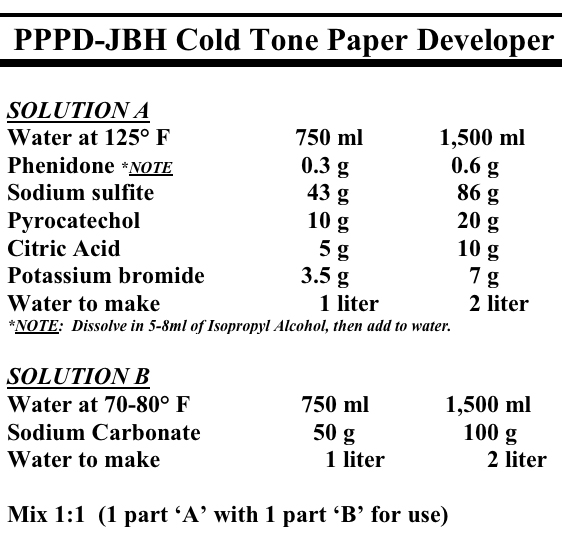
Please note that this developer contains chemicals that could be hazardous. Practice safe handling procedures when mixing chemicals. Wear gloves or use tongs when working with PPPD. In fact, it is a good idea to wear gloves when using any print or film developer.
Keep in mind this is a cold-tone developer. If you search the Internet you will find more information on other variations of the PPPD formula. Supposedly adding Pyrogallol and varying the amount of Potassium Bromide makes this a warm-tone developer, but I have not tried it, since I was not interested in warmer print tone.
I would like to personally thank Donald Miller, and all the others involved for laying the groundwork and publishing this formula, and its numerous variations, for Pyro Plus Paper Developer. Anyone wishing to experiment with PPPD, or seeking more information, try an Internet search for Pyro Plus Paper Developer.
Here you will find the original Pyro Plus Paper Developer formulated by Donald Miller;
http://unblinkingeye.com/Articles/PyroPlus/pyroplus.html
JB
MY POINT EXACTLY
 In my last post here titled “ORIGINALLY POSTED ON OUR OLD BLOG; Saturday, January 17, 2009; WHERE HAVE ALL THE PHOTOGRAPHY CLUBS GONE?” I tried to make the point that the failure to promote and teach ultimately leads to the loss of knowledge and processes that need to be preserved. In that post I was particularly hard on the photography clubs and their failure to promote and maintain the many facets of the art of photography. Photography clubs have become, for the most part, computer clubs. They ignore the other facets of the craft and even tout the lie that digital is all there is in the entire universe. This to me short changes everyone and leads to a loss of other beautiful and useful photographic processes. It also leads to pure ignorance among those that are interested in entering into the art form.
In my last post here titled “ORIGINALLY POSTED ON OUR OLD BLOG; Saturday, January 17, 2009; WHERE HAVE ALL THE PHOTOGRAPHY CLUBS GONE?” I tried to make the point that the failure to promote and teach ultimately leads to the loss of knowledge and processes that need to be preserved. In that post I was particularly hard on the photography clubs and their failure to promote and maintain the many facets of the art of photography. Photography clubs have become, for the most part, computer clubs. They ignore the other facets of the craft and even tout the lie that digital is all there is in the entire universe. This to me short changes everyone and leads to a loss of other beautiful and useful photographic processes. It also leads to pure ignorance among those that are interested in entering into the art form.
Below is a review sent to me from a photographer friend of a Nikon F6 camera that someone purchased through Amazon. At first this was funny to me, then I thought it was a joke, and finally the hard and sad truth began to sink in. This represents the sad state of affairs today. Read this review;
“This review is from: Nikon F 6 – SLR camera – 35mm – body only (Electronics)
Camera will not work with CompactFlash or other digital media. You must buy a cartridge of tape, which allows for just 24 shots. No LCD screen with image playback. Very disappointed and returned.”
HERE is the link to the original review on the Amazon web site. Sorry, the original review has been removed. . .
Read some of the comments to this supposed “Review.” At this writing there are eleven pages of comments. Guess I will go find a roll of that tape. I don’t know whether to laugh or cry???
JB
WHERE HAVE ALL THE PHOTOGRAPHY CLUBS GONE?
NOTE: This post originally appeared on our first BLOG that is no longer active. I am resurrecting it here because it is something I feel needs to be repeated. Just another one of my little rants about the state of affairs pertaining to my favorite subject. . . Photography. To be even more specific. . . Film Photography. Take my comments with a grain of salt. . . or. . . maybe more like rubbing salt in your eyes????
—————————————————–
WHERE HAVE ALL THE PHOTOGRAPHY CLUBS GONE?
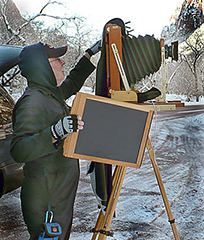
JB Harlin With 11×14 Camera
To answer that question, they have turned into Computer Clubs! Why? I really do not know why, but I have an idea.
People in general are consumer driven by what the large manufacturers say and do. Certain large, should I say behemoth, manufacturers have taken the initiative to try and influence the photographic market place. Corporate bean counters are forever trying to enhance the bottom line. These so called Harvard MBA’s have little to no experience in reality, they just look to their book learning and spread sheets for bigger, better, faster. They are paid to find pie-in-the-sky schemes that look good for the bottom line. They know little about the product nor its users. And, they really don’t care about anything beyond the quarterly report to the board and share holders. This mindset has filtered into the film photography industry. They don’t care about their product nor their customers beyond what they can get from either or both. Hence the battle cry “Film Is Dead” has gone out through the photography world because someone thinks that is where they can make the most money. And, people, sadly most people, follow like sheep. Repeating the call and believing it is true.
How many times have I been asked, “where do you get film for that camera?” This gets really old in a hurry, but the reality is, people are just misinformed. Way too much TV, radio, magazine ads, billboards, newspapers, Internet, etc, for anyone’s good. We, as a society, are pounded day and night with endless advertising. And, sadly, we believe it! “We couldn’t say it on TV if is wasn’t true” is something I hear on some infomercial. Remember, advertisers will tell you anything to get your money!
OK, so what does this have to do with the Camera/Computer Club? It seems that they have become one of the sources for the misconception of the Film Is Dead hoax. Go to most any club, bring up film, and you will be instantly told there is no such thing. It is not that they are trying to intentionally mislead, they are just misinformed. They have bought into the hoax, because it is what they have heard somewhere. And what ticks me off is the fact that they continue to spread false information.
My wife and myself in the past were involved with camera clubs. Why? Because it was a place to meet like-minded individuals and share our interests. Several years ago we found that more and more we had little in common with the other members. They were speaking in tongues, discussing materials and equipment we knew nothing about and had no interest in learning. You can say we lost that ‘like mindedness.’ We cease to be interested and are no longer members.
So, why should this bother me? Because misinformation is detrimental to creativity and the art of photography. I really don’t care if you shoot digital. It is simple; Digital Is Its Own Art Form! Acrylic paint did not replace oil for the painter. In this modern age, people still use candles, hand write letters, ride horses, and who knows what else that has evolved into some more up-to-the-minute technology. Why this all-out move to kill film photography and to try and convince anyone interested that digital is the only choice?
What bothers me is the fact that clubs preach from the rafters the falsehood that film is gone. What if someone wanting to express their artistic vision joins a camera club to learn the craft? They are told film is no longer manufactured, not available, don’t bother. Then they spend their time and money working with digital only to learn later that film is still alive and possibly more important, the direction more suitable to their vision. Film is another medium for their expression. They have now wasted valuable time and resources exploring a medium that is not suitable to their creativity.
A good club, at least for me, would foster all forms of photography, from digital, to the most extreme alternative processes. That way those interested in the medium could see what is really available and make the choice as to which process is right for them. The world is not a one-size-fits-all society. Creative people have something to say. They may write, sculpt, paint or photograph. What is important to the beginner is that they see what their options are, so they can make an intelligent choice. No one should be funneled down the wrong path just because the local Computer Club feeds them a line of BS based on a hoax. If you are just starting out in photography, be very careful if you choose to start with a Camera Club! It could just cost you the most valuable commodity you have. . . TIME!!!
And, to those that are in charge of the local camera clubs, pull your head out of the sand and look around. There is an entire world of photographic imaging, from digital to exotic alternative processes where you create your own emulsions. You just have to look for it somewhere beyond the narrow minded Hoax of Film Is Dead. Please, don’t tell the next new person that comes to a meeting that digital is the only game in town!!!
Posted by JB and Susan Harlin at 1:53 PM Saturday, January 17, 2009
THE VIEW OUT MY WINDOW SYNDROME
 I have struggled for years to understand the concept of what is visually stimulating. Just exactly what does it take to strike a nerve that leads to the successful completion of an expressive photograph? Specifically, why is it that I cannot easily find something in my immediate environment that I find worthy of photographing? There was a time when I really thought there was something wrong with my perception of my surroundings. Edward Weston said something to the effect that, you should be able to look down at your feet and find something interesting to photograph. Doesn’t always work for me.
I have struggled for years to understand the concept of what is visually stimulating. Just exactly what does it take to strike a nerve that leads to the successful completion of an expressive photograph? Specifically, why is it that I cannot easily find something in my immediate environment that I find worthy of photographing? There was a time when I really thought there was something wrong with my perception of my surroundings. Edward Weston said something to the effect that, you should be able to look down at your feet and find something interesting to photograph. Doesn’t always work for me.
The trouble is, I have a difficult time finding anything within my local surroundings that excites me very much. Some of this has to do with the fact that I live on a flat coastal plane at 600 feet above sea level and what I like the most is mountains and snow. I just can’t seem to find barb wire fences to the horizon, hay rolls, or wind mills that interesting.
I used to think this was only a personal mental issue that I alone suffered from, and that I was in some way creatively impaired. I thought that all I needed to do was find some magic somewhere that would allow me to visually connect to what I see every day. There were those times that I was able to find visual stimulation. Such as dense fog, or really interesting clouds, or maybe a rare snow storm. But most of the time I found that I was forcing myself to just get out and that what I created was not something I really cared for. So, why bother?
As I began to associate with other photographers, many living in other areas of the country, what I found was surprising. I met and talked with people that live in some of what I feel are the most visually stimulating places on the earth. To my dismay some of them have no interest whatsoever in even visiting, let alone photographing what I would give near anything to have unlimited access to. I have talked to people that have grown up within a few hours drive of these places and have never visited, let alone ever had even considered to take a look, let alone make a serious photograph of what lay literally in their back yard.
I began to realize that I was not alone when it came to finding inspiration and visual excitement within my immediate environment. I began to think more in terms that this is a normal ‘thing’. . . a ‘syndrome’. . . a ‘phobia’. . . or whatever, that many other suffer from, or in some way deal with, also.
I am a big fan of the late Bill Jay. His writing on photography is classic. I found this excerpt from one of his most popular pieces and it seemed to connect to my thoughts about this perplexing condition;
“. . . in order to photograph with any degree of continuous passion, you must have a fascination for the subject, otherwise you cannot sustain an interest in the act of creation for a long enough period of time in which to make any insightful or original statement about it.” 1
Thank you Bill Jay!
I have now accepted my condition and even dredged up a name for this phenomenon. I call it, “The View Out My Window Syndrome.” There seems to be something about what you have seen every day of your life and how visually exciting that view becomes over your lifetime. At least for some of us, this is some sort of syndrome. The question is, what can you do about it?
I have come to believe that there is little you can do about The View Out My Window Syndrome. . . so you just live with it. Maybe it is more important to accept it and not obsess over something you have little control over. Make it your goal to find and photograph whatever excites you and do not bother with what lay outside your window, especially if it does not excite you!
I started working on this post some time back and have now returned to complete my thoughts. We have had an unusual winter storm here in Texas. We are on the fourth day of cold, ice, and snow. Today we just had another 2-3 inches of new snow. This is the kind of weather we love when we are out in our favorite areas. . . in the mountains or the visually stunning S/W. Yet with all of this nice cold and snow I have little to no interest in dragging a camera out. The back yard is as boring as the back of my hand. I cannot think of any place near by that I would risk driving to that would be visually exciting, even with a gorgeous coating of snow. Maybe if I did get out I could find something, but I really have no inclination to risk being ran over by some idiot driving on ice. When in the mountains or the desert S/W I don’t mind driving 40-50 miles on solid ice to shoot some film. Here, I don’t even want to walk to the mail box. Why? Good question, but this is an example of a bad case of “The View Out My Window Syndrome.”
JB
1 “The Thing Itself; The fundamental principle of photography” First published in Newsletter, Daytona Beach Community College, 1988
http://www.billjayonphotography.com
http://www.billjayonphotography.com
FILM DIAGONAL
Sometimes it is necessary to know the diagonal dimension of a particular film format. This is especially true when trying to determine if a lens has a large enough image circle in order to adequately cover a certain film format. Modern lens manufacturers publish specifications that will tell you the maximum format the lens is designed for. But, with older lenses this information is sometimes not available. If you can determine the image circle of the lens, then you can determine which film sizes will work with the lens.
For example, say you are contemplating buying a lens and you know the image circle is 325mm. Looking at the table below you will immediately see that 325mm is the exact diagonal of a sheet of 8×10 film. This lens would probably work. But, you would have absolutely no movement available when using the camera. This lens would adequately cover 4×10 and would have generous coverage for 5×7 and 4×5 formats.
Here are a few common film sizes and their diagonal dimension;
If you need to calculate the film diagonal of any format, here is the formula.
A = Film Height
B = Film Width
C = Film Diagonal
Keep in mind that the actual image area is slightly less than the film dimension due to the hold-down guides that keep the film held in place in the holder. This calculated diagonal measurement is plenty close enough to determine adequate image circle of any lens.
Hope you find this information helpful!
JB
SPOTTING MICROSCOPE
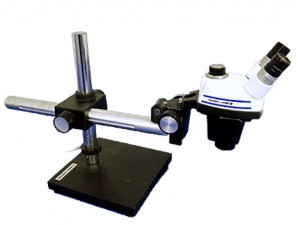
If you are like me, you really hate having to spot prints. You especially do not like spotting negatives. I struggled for years trying to come up with a good way to spot prints. The problem is getting a good look at what you are working on, with enough detail to accurately guide that hair-fine spotting brush to just the right spot. I used a loop. . . tried magnifying glasses. . . used a magnifying viewer for some time, but nothing gave me a really good view of what I was working with.
Somewhere along the way someone suggested using a stereo microscope. What a stroke of genius!
After doing some research it became clear that a high-quality inspection microscope, with magnification in the 8x to 10x range was prefect for spotting both prints and negatives. A good stereo microscope with zoom was exactly what is needed. The ideal setup would have a long boom stand so you can swing the head out over the work area, and for spotting prints you need an illuminator. I was able to find an entire microscope package including a zoom stereo head, eyepieces, long boom stand with heavy base, and illuminator on eBay.
The microscope head that I have has a zoom range of 0.70 to 3.00 x. Using a set of eyepieces that are 10x, I have a zoom range of 7.0 to 30.0 x. This is perfect! Most of the time 7x is fine, but if I have a really tiny pinhole I can zoom in even more. The microscope illuminator is necessary for working with prints, while you will need a light box for working on negatives. This is why you need a good, adjustable, boom with a heavy base.
It takes a little getting used to, but a stereo microscope is the Rolls Royce of spotting magnifiers. Well worth the expense. This type of microscope setup is used in manufacturing quality control to inspect small parts and comes up in the used market frequently. Searching out a good microscope will save you a lot of headaches and make that unpleasant chore of spotting a little more tolerable.
JB
UTAH 2010-2011 TRIP SNAPSHOT ALBUM
Our 2010-2011 Snapshot Album is up and ready for viewing. We had another great trip and you can find our album HERE.
UTAH 2010/2011
 We have returned to warm Texas after another month long adventure photographing in Utah. This year we spent our time equally between Springdale and Moab.
We have returned to warm Texas after another month long adventure photographing in Utah. This year we spent our time equally between Springdale and Moab.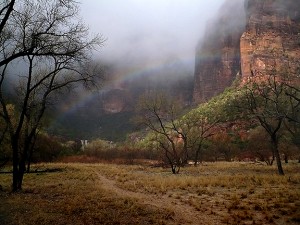 We had varying weather ranging from warm and wet to cold and snow. It was mild in Zion and we experienced a flood. They had a year’s worth of rain in eight days. The park was closed for two days and some areas were evacuated. Water everywhere.
We had varying weather ranging from warm and wet to cold and snow. It was mild in Zion and we experienced a flood. They had a year’s worth of rain in eight days. The park was closed for two days and some areas were evacuated. Water everywhere.
We left Springdale early to get ahead of a winter storm that dumped ten inches of snow in Arches NP and eighteen inches in Canyonlands NP after we arrived. Temperatures changed from mild to a low one morning of -9F and warmed most days to a balmy 15F.
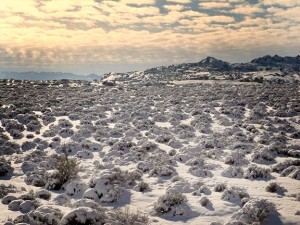 We had a great time. We lost a lot of shooting days to weather, but still made the most of it. Saw truly amazing things and hopefully brought back a few keepers. Now we are working on getting our film notes in order so we can start processing film and we are also working on our snapshot album. Hope to have some snapshots up on the web site soon, so watch here for more information.
We had a great time. We lost a lot of shooting days to weather, but still made the most of it. Saw truly amazing things and hopefully brought back a few keepers. Now we are working on getting our film notes in order so we can start processing film and we are also working on our snapshot album. Hope to have some snapshots up on the web site soon, so watch here for more information.
Hope everyone had a great Christmas and New Year.
JB & Susan
 We had a great time. We lost a lot of shooting days to weather, but still made the most of it. Saw truly amazing things and hopefully brought back a few keepers. Now we are working on getting our film notes in order so we can start processing film and we are also working on our snapshot album. Hope to have some snapshots up on the web site soon, so watch here for more information.
We had a great time. We lost a lot of shooting days to weather, but still made the most of it. Saw truly amazing things and hopefully brought back a few keepers. Now we are working on getting our film notes in order so we can start processing film and we are also working on our snapshot album. Hope to have some snapshots up on the web site soon, so watch here for more information.
